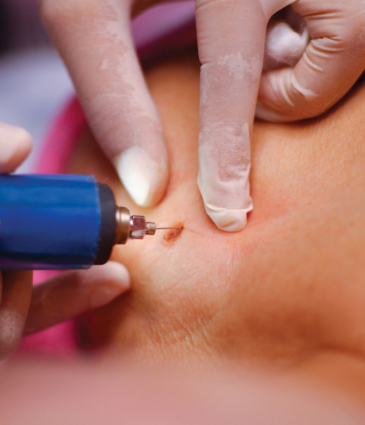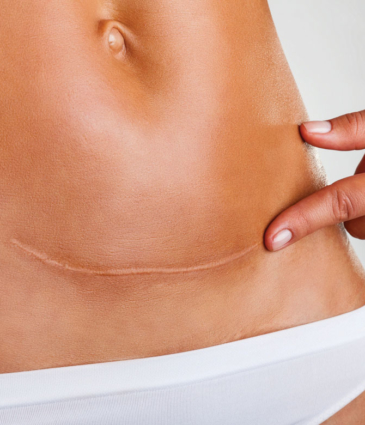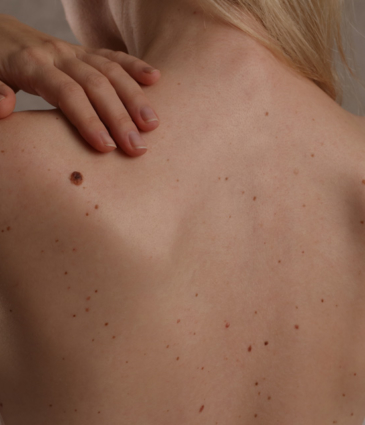Complete mole removal
Treatment
Mole Removal
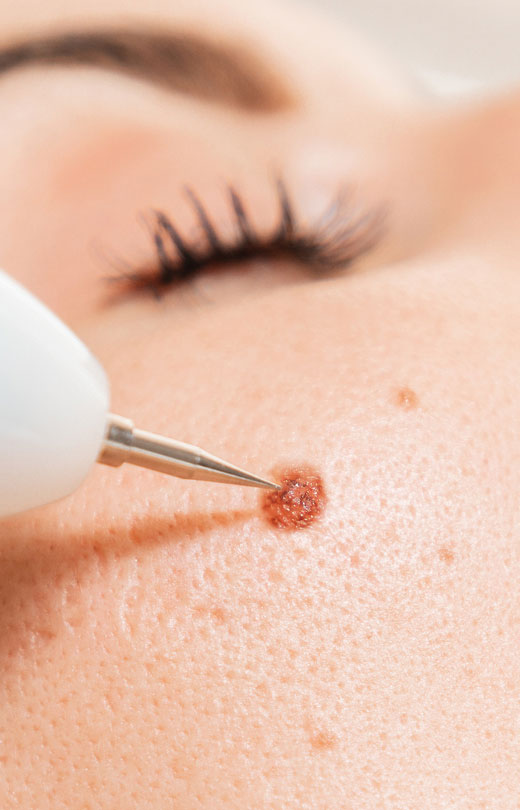

Treatment at a glance
Expected result:
Treatment time:
30-45 minutes
Anaesthetic:
None
Downtime:
Little to none
Longevity:
Long term / permanent results
Expected result:
Complete mole removal
Treatment time:
30-45 minutes
Anaesthetic:
None
Downtime:
Little to none
Longevity:
Long term / permanent results
At Binsina Skin & Laser Clinic, we offer precise mole removal using safe, non-invasive treatments such as cauterisation and CryoPen. The technology in these advanced methods effectively treats moles and other skin irregularities (such as skin tags and milia) on the face, neck, and body, ensuring minimal discomfort and scarring.

The mole removal procedure begins with a consultation to assess the mole’s size and location. Cauterisation is a precise method used to remove a mole by applying heat to the tissue, typically through an electrically charged probe.
The heat causes the mole’s cells to burn and break down, effectively removing the growth and sealing the surrounding skin to minimise bleeding. If CryoPen is recommended as a more suitable option, freezing temperatures are delivered directly to the mole, effectively destroying the tissue and causing the mole to gradually fall off or be reabsorbed by the body over time. Depending on the size and depth of the mole, additional follow-up sessions may be recommended.


Benefits of Mole Removal
Achieve smooth, clear skin with cauterisation mole removal at Binsina Skin & Laser Clinic – precise, effective, and non-invasive.
- Non-Invasive Treatment: cauterisation uses heat energy to safely remove moles without cutting or stitches, ensuring a quick, non-surgical procedure.
- Minimal Discomfort: The procedure requires the application of a topical anaesthetic, ensuring little to no pain.
- Limited Downtime: Mole removal with cauterisation requires minimal recovery time, allowing you to resume daily activities within 1-2 days.
- Precise and Effective: Cauterisation targets the mole precisely, ensuring complete removal while minimising damage to surrounding healthy skin tissue.
Is Mole Removal right for you?
Mole removal at Binsina Skin & Laser Clinic, using cauterisation, delivers excellent results with minimal downtime. After the procedure, the treated area may form a scab that eventually falls off, leaving behind even skin.
Over the following 1-3 weeks, the treated area will heal, revealing smooth, clear skin. Most patients experience complete removal in a single session, but larger or deeper moles may require a follow-up treatment. The results are permanent, as cauterisation effectively destroys the mole’s tissue. Proper aftercare, such as avoiding sun exposure and following clinic instructions, ensures long-lasting results with minimal scarring.
For your safety and peace of mind, please review our Terms & Conditions before booking, so you know exactly what to expect from your treatment and aftercare.
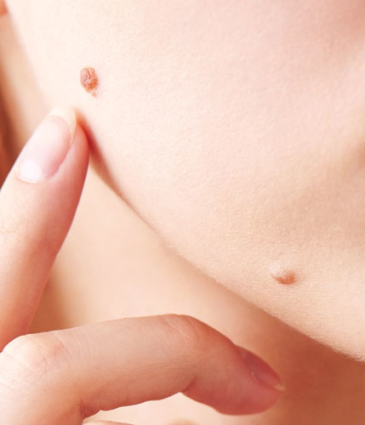


FAQs
Is mole removal with cauterisation safe?
Cauterisation for mole removal is a safe and effective procedure when performed by trained professionals. The process involves using heat to remove the mole while sealing the surrounding tissue to minimise bleeding and reduce the risk of infection. It is a clinically-approved method that provides precision in mole removal, ensuring optimal safety and effectiveness. Cauterisation can also be used to remove skin tags, milia, warts, and seborrheic keratosis.
Is the treatment painful?
Mole removal with cauterisation may cause some discomfort, but it is generally well-tolerated. Patients may feel a warm or mild burning sensation during the procedure. Local anaesthesia is typically applied to numb the area, making the treatment more comfortable. Any discomfort usually subsides quickly after the procedure.
Is there any aftercare?
After cauterisation, it is important to keep the treated area clean and dry. You should avoid touching, scratching, or picking at the site, as this can interfere with healing. Protect the area from direct sun exposure and apply sunscreen to shield the healing skin. It’s also recommended to attend follow-up appointments to ensure proper healing and that the mole has been fully removed.





